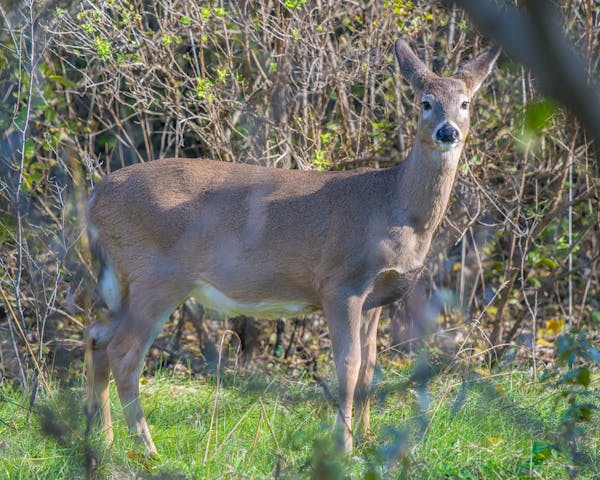Deer crossing signs once were a common sight on Minnesota highways, but not anymore.
Over the past decade, the yellow diamond-shaped signs bearing an image of a deer have all but vanished from state roads. It's mainly because drivers didn't heed the warnings to slow down and look for deer, said Chris Smith, a wildlife ecologist with the Minnesota Department of Transportation (MnDOT).
"We didn't see changes in human behavior," Smith said.
Yet vehicle-deer crashes are quite common in Minnesota, particularly in September through December. A MnDOT crash database shows about 2,000 such collisions occur annually, but that doesn't come close to accounting for the actual number of incidents, said Ron Moen, a wildlife biologist with the Natural Resources Research Institute at the University of Minnesota-Duluth.
A better indication comes from State Farm Insurance's annual review of claims filed. Last year, more than 40,000 car-vs.-animal collisions occurred in the state, with a majority involving deer. Motorists in Minnesota have a 1 in 58 chance of colliding with an animal, the insurance company said.
And even State Farm's reported figures may be low, because drivers might only make a police report or file an insurance claim if their mishap leads to an expensive repair, Moen said.
Moen and another researcher working through the University of Minnesota's Center for Transportation Studies are about three-quarters through a yearlong study to determine how many deer-vehicle crashes actually happen in Minnesota, and what, if anything, can be done to drive those numbers down.
For the past year, Moen has been driving highways in northeastern Minnesota, including Hwys. 33, 53 and 210, and Interstate 35 from Hinckley to Duluth. When he comes across the remnants of a vehicle-deer crash, he enters the GPS coordinates into a database. Moen said he recorded as many as one deer-vehicle collision every three to four miles on some rural roads.
At each site, he also uses his phone to photograph the scene, noting where the deer fell on the roadside and which direction the vehicle was headed. His notes also include road characteristics, surrounding habitat, traffic volume and speed limits.
"The idea is to identify where deer-vehicle collision hot spots are and see what might be contributing to these collisions," said Raphael Stern, assistant professor in the U's Department of Civil, Environmental and Geo-Engineering, who is working with Moen.
Vehicle-deer crashes are costly, with an estimated cost of $20 million annually for those that are reported, and more when unreported crashes are factored in, Moen said. Costs include injuries, car repairs, lost work time and the emotional toll of being in a crash.
With better data, the two researchers hope to present strategies to reduce collisions, such as installing dynamic signs or fencing.
"We are not going to reduce it to zero, but even if we can reduce it 1%, that will be a tremendous cost savings," Moen said. "This study has the potential to deliver a million-dollar return on investment."

Teen suspect in Nudieland mass shooting arrested on murder, assault charges
'Human error' behind Robbinsdale shelter-in-place alert that was mistakenly sent countywide

Going to Wolves or Twins tonight? How to get there (and maybe avoid traffic).
Focusing on bringing football film into frame


